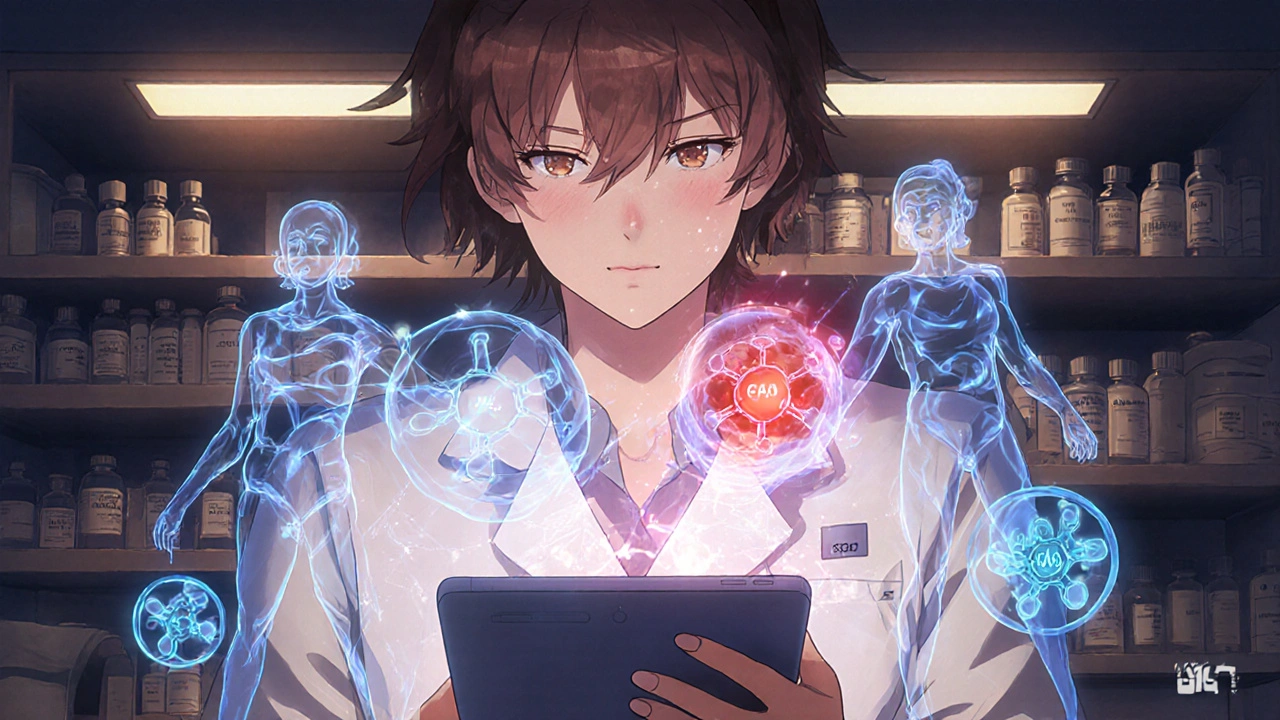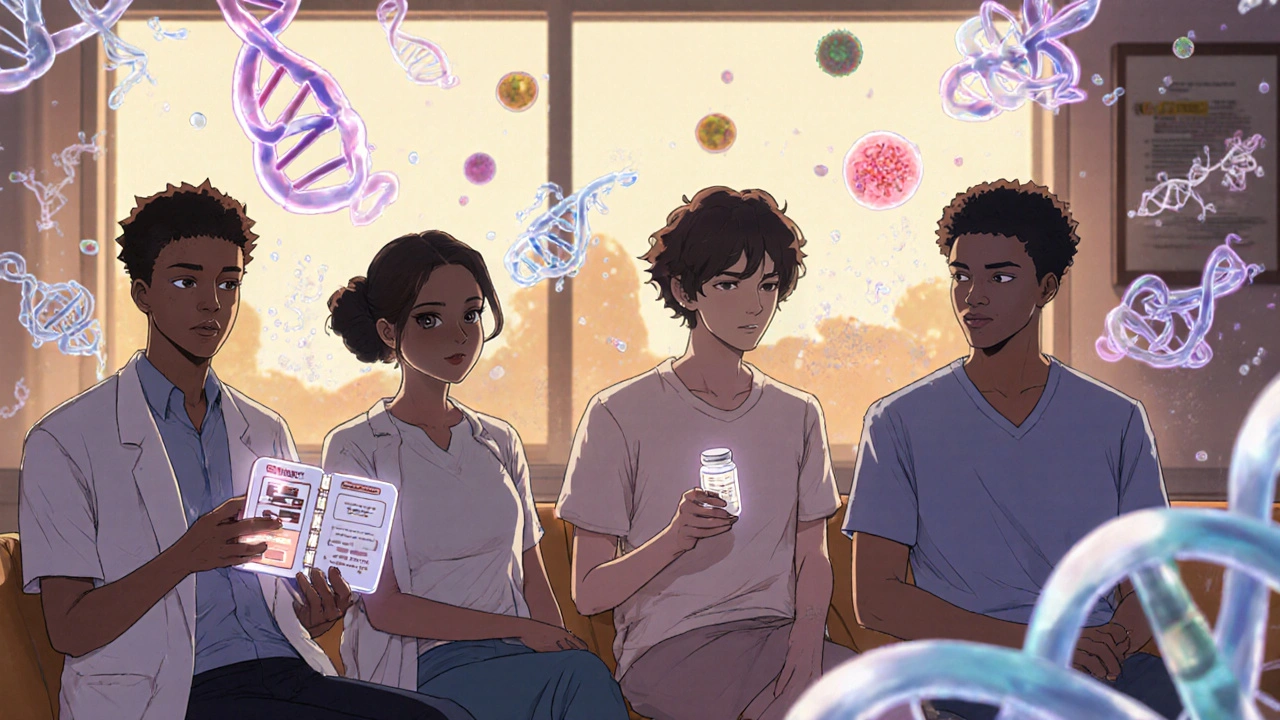When someone is diagnosed with cancer, chemotherapy is often one of the first treatments discussed. It’s not new - it’s been used for decades - but that doesn’t mean it’s simple. In fact, chemotherapy is one of the most complex parts of cancer care because it doesn’t just attack cancer. It affects everything in your body that divides quickly: hair follicles, gut lining, bone marrow. And when you’re already on other medications - for heart disease, diabetes, depression, or even just a common cold - things get even more complicated. Chemotherapy doesn’t play nice with everything. Some drugs can make it stronger, others can make it useless, and a few can turn deadly.
How Chemotherapy Works - And Why It’s So Harsh
Chemotherapy drugs are designed to kill fast-growing cells. That’s why they work on cancer - most tumors grow rapidly. But your hair, your stomach lining, and your blood cells also grow fast. That’s why you lose hair, get sick to your stomach, and end up with low blood counts. The most common chemo classes include anthracyclines like doxorubicin, alkylating agents like cyclophosphamide, and antimetabolites like methotrexate. Each works differently, but all are powerful enough to require careful dosing.
Dosing isn’t random. It’s calculated by body surface area (in mg/m²), not just weight. A 150-pound person and a 200-pound person might get the same dose if they’re the same height. This precision matters because too little won’t kill enough cancer cells. Too much can shut down your bone marrow, leading to dangerous infections or bleeding. That’s why chemotherapy is never given casually. It’s handled by oncology pharmacists, administered by specially trained nurses, and tracked with electronic systems that flag unsafe combinations before they happen.
Drug Interactions: The Hidden Danger
One of the biggest risks in cancer care isn’t the cancer itself - it’s the other pills you’re taking. A common painkiller like ibuprofen can increase the risk of kidney damage when mixed with cisplatin. St. John’s wort, often used for mild depression, can speed up how fast your liver breaks down chemo drugs like docetaxel, making them less effective. Even something as simple as grapefruit juice can interfere with the metabolism of drugs like paclitaxel or etoposide, causing toxic buildup.
Some interactions are life-threatening. For example, combining the chemotherapy drug irinotecan with certain antibiotics like clarithromycin can cause severe, sometimes fatal, diarrhea. Why? Because both drugs affect the same liver enzyme (CYP3A4). Your body can’t process them properly, and the chemo builds up to dangerous levels. That’s why oncologists ask for a full list of medications - prescription, over-the-counter, vitamins, and herbal supplements - before starting treatment.
Even something as routine as a flu shot can be risky. Live vaccines (like the nasal flu spray or shingles vaccine) are off-limits during chemo because your immune system is too weak. But inactivated shots (like the flu shot in your arm) are not only safe - they’re recommended. The key is timing. Getting vaccinated during a chemo “break” gives your body the best chance to respond.
Oral Chemo: Easy to Take, Hard to Manage
More chemo drugs are now available as pills - like capecitabine, temozolomide, or lenalidomide. It sounds convenient. No needles. No clinic visits. But oral chemo has its own dangers. Patients forget doses. They skip them because they feel sick. They take them with food when they’re supposed to be empty-stomached. One study found that 20-30% of patients don’t take oral chemo exactly as prescribed.
And here’s the kicker: if you miss a dose or take it wrong, the cancer can become resistant. That means the next time you take it, it won’t work. That’s why patients on oral chemo get frequent check-ins - not just from doctors, but from pharmacists who call to ask, “Did you take your pill yesterday?”

Chemo and Other Cancer Treatments: The New Reality
Chemotherapy isn’t used alone like it used to be. Today, it’s often paired with immunotherapy, targeted drugs, or radiation. That’s good - it means better outcomes. But it also means more chances for interactions.
For example, combining chemo with immune checkpoint inhibitors like pembrolizumab can boost response rates in lung cancer. But it also raises the risk of autoimmune side effects - like colitis or thyroid problems - that need to be caught early. Or take antibody-drug conjugates like sacituzumab govitecan. These are chemo drugs wrapped in a targeting system that delivers the poison straight to cancer cells. They’re more precise, so they cause less hair loss and nausea. But they still interact with other drugs. If you’re on a blood thinner, your risk of bleeding goes up.
Studies show that combination therapy - chemo plus something else - works better than chemo alone. But it also means more side effects. In one trial for triple-negative breast cancer, chemo plus immunotherapy gave a 65% response rate, but 58% of patients had severe side effects like low white blood cells or liver damage. The trade-off is real. Survival goes up. Quality of life often goes down.
What Patients Actually Experience
Real people don’t talk about response rates. They talk about fatigue. About being too tired to hold their grandchild. About hair that never grows back the same way. About numbness in their fingers that makes buttons impossible. One patient on Reddit wrote, “I had AC-T chemo. I lost everything - my hair, my nails, my energy. But I’m alive. I’d do it again.”
But not everyone has that outcome. A 2023 survey found that 44% of patients had their chemo delayed because their white blood cell count dropped too low. Black patients were 1.7 times more likely to face delays than white patients - not because of biology, but because of access, insurance, or how quickly their symptoms were taken seriously.
Supportive care makes a huge difference. Patients who got help with nutrition, mental health, and pain control from the start reported 35% higher quality of life and 22% fewer ER visits. It’s not just about killing cancer. It’s about keeping you alive and able to live while you do it.

What’s Changing - And What’s Next
Chemotherapy isn’t disappearing. But it’s changing. Instead of dumping toxic drugs into your whole body, scientists are finding ways to deliver them only to tumors. Nanoparticles that target cancer cells are in late-stage trials. They could cut side effects by half. Circulating tumor DNA tests now help doctors know when to stop chemo - no need to keep giving it if the cancer is gone. One trial showed 32% of colon cancer patients could safely skip extra chemo cycles based on DNA results.
Genetic testing is becoming standard. Before giving irinotecan, doctors now check for a UGT1A1 gene variant that makes you more likely to get severe diarrhea. Before tamoxifen, they test CYP2D6 to see if your body can turn it into its active form. These aren’t fancy tests. They’re simple blood or saliva checks. And they’re saving lives by preventing bad reactions.
Still, chemotherapy remains the backbone of curative treatment for most cancers. The National Comprehensive Cancer Network says it’s the top choice for early-stage breast cancer, colon cancer, and many lymphomas. Even as newer drugs rise, chemo is still in 78% of early cancer treatment plans. It’s not the future - it’s the foundation.
What You Should Do
- Keep a written list of every medication you take - including supplements, vitamins, and herbal products. Update it every time something changes.
- Never start or stop a medication without talking to your oncology team. Even if it’s something you’ve taken for years.
- Ask: “Could this interact with my chemo?” before taking anything new - even a cough syrup or antacid.
- If you’re on oral chemo, set phone alarms. Use a pill organizer. Ask for a pharmacist to call and check in.
- Report side effects early. Don’t wait until you’re in the ER. Fatigue, numbness, diarrhea, fever - tell your team right away.
- Ask about genetic testing. It’s not optional anymore. It’s part of safe, personalized care.
Chemotherapy isn’t magic. It’s medicine - powerful, messy, and sometimes brutal. But when used right, with full awareness of drug interactions and patient-specific risks, it saves lives. The goal isn’t just to fight cancer. It’s to fight it without breaking the person.
Can I take over-the-counter pain relievers while on chemotherapy?
Some are safe, others are dangerous. Acetaminophen (Tylenol) is usually okay for mild pain. But NSAIDs like ibuprofen or naproxen can increase kidney damage risk with drugs like cisplatin or increase bleeding risk with drugs like paclitaxel. Always check with your oncology team before taking anything - even aspirin.
Does grapefruit juice really interfere with chemotherapy?
Yes. Grapefruit and grapefruit juice block an enzyme in your liver (CYP3A4) that breaks down many chemo drugs, including docetaxel, etoposide, and vinca alkaloids. This causes higher drug levels in your blood, increasing side effects like nerve damage, low blood counts, or even toxicity. Avoid it completely during treatment.
Why do some patients get their chemo delayed?
The most common reason is neutropenia - a dangerously low white blood cell count. Chemo kills fast-dividing cells, including infection-fighting white cells. If your count drops too low, doctors pause treatment to let your body recover. Delays are more common in Black patients due to disparities in access to timely lab tests, supportive care, and transportation - not because of biology.
Are herbal supplements safe during chemotherapy?
Most are not. St. John’s wort can make chemo less effective. Green tea extract may interfere with bortezomib. Turmeric can increase bleeding risk. Even vitamins like high-dose C or E may protect cancer cells from chemo damage. Always disclose everything you take - supplements are not harmless.
Can I get vaccinated while on chemotherapy?
Inactivated vaccines (flu shot, pneumonia shot, COVID boosters) are safe and recommended. Live vaccines (nasal flu, shingles, MMR) are not - your immune system is too weak. Timing matters: get vaccines during a chemo break, if possible. Always ask your oncologist before getting any shot.
Is chemotherapy still worth it if it causes so many side effects?
For many, yes. In cancers like Hodgkin lymphoma or testicular cancer, chemo can be curative. Even in advanced disease, it can extend life by months or years with good quality. The key is balancing benefit and burden. Supportive care - for pain, nausea, fatigue, and mental health - makes a huge difference. Many patients say they’d do it again because the outcome was worth it.
What’s the future of chemotherapy?
It’s not going away - but it’s getting smarter. New delivery systems like antibody-drug conjugates and nanoparticles target tumors directly, reducing side effects. Genetic testing helps pick the right drug for your body. Liquid biopsies tell doctors when to stop chemo, avoiding unnecessary treatment. Chemotherapy is becoming part of a smarter, more precise toolkit - not the blunt instrument it once was.
Chemotherapy is not a one-size-fits-all treatment. It’s a tool - powerful, precise, and dangerous if misused. The best outcomes come not from the drug alone, but from the careful coordination of care: the oncologist, the pharmacist, the nurse, the patient, and the family. When everyone is informed and involved, chemotherapy doesn’t just fight cancer. It helps people live.


 Medications
Medications